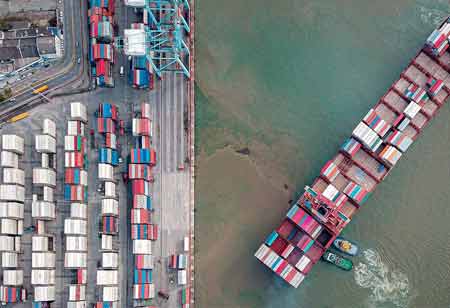THANK YOU FOR SUBSCRIBING
THANK YOU FOR SUBSCRIBING

By
Logistics Transportation Review | Tuesday, April 15, 2025
Stay ahead of the industry with exclusive feature stories on the top companies, expert insights and the latest news delivered straight to your inbox. Subscribe today.
Businesses should weigh the factors based on their shipping needs, budget, and delivery timelines to determine the best operation option.
Fremont, CA: When it comes to freight shipment, companies frequently have to decide between full truckload (FTL) and less-than-truckload (LTL) choices. Each approach has particular advantages and disadvantages that change based on variables, including shipment size, urgency, and budget. This can make it hard to predict transportation prices with any degree of accuracy beforehand, which could cause problems for organizations when it comes to budgeting.
Both LTL and FTL shipping have distinct advantages and disadvantages. LTL is ideal for smaller shipments and offers cost savings and flexibility but comes with longer transit times and increased risk of damage. FTL provides faster delivery and a lower risk of damage for large shipments but at a higher cost for smaller loads and with a more significant environmental impact.
Multiple shippers share the space, and costs are distributed based on the size and weight of the shipments. This makes LTL an affordable option for businesses sending smaller loads, as they only pay for the space they use. By consolidating shipments from various shippers, LTL minimizes the number of trucks on the road. This leads to better fuel efficiency and lower carbon emissions, making it a more environmentally sustainable choice than FTL.
LTL shipping allows businesses to move goods before filling an entire truck. It is beneficial for companies with varying shipment sizes or irregular shipping schedules. Many LTL carriers also offer frequent pickup services, providing added convenience for businesses with fluctuating demands. LTL services often operate through a broad network of carriers and terminals, allowing for extensive geographic coverage.
Companies can rely on LTL to ship goods over long distances, as LTL carriers typically offer greater route flexibility. FTL shipments are more efficient and ideal for time-sensitive deliveries without multiple stops or handling points. The freight is not handled between terminals, making FTL a safer option for fragile or high-value goods.
The simplicity gives businesses a clearer understanding of costs, making it easier to budget for shipments. FTL is a more economical option for businesses with large or bulk shipments. Shipping an entire truckload allows companies to maximize the space and lower the per-unit shipping cost for shipments that exceed LTL capacity.
LTL shipments get consolidated with other goods; they typically undergo more frequent stops and handling at multiple terminals. It can lead to longer delivery times, which may be better for businesses requiring expedited or time-sensitive deliveries. With more handling points and multiple shipments being loaded and unloaded along the way, there is a higher risk of damage to goods in LTL shipping.
Even if the car is incomplete, the cost remains the same, leading to potential inefficiencies and higher per-unit costs for smaller shipments. FTL shipping requires a full truckload, meaning businesses must wait until they have enough goods to fill the truck. Because FTL involves transporting a single load in a dedicated truck, it may result in more trucks on the road than LTL.
I agree We use cookies on this website to enhance your user experience. By clicking any link on this page you are giving your consent for us to set cookies. More info





